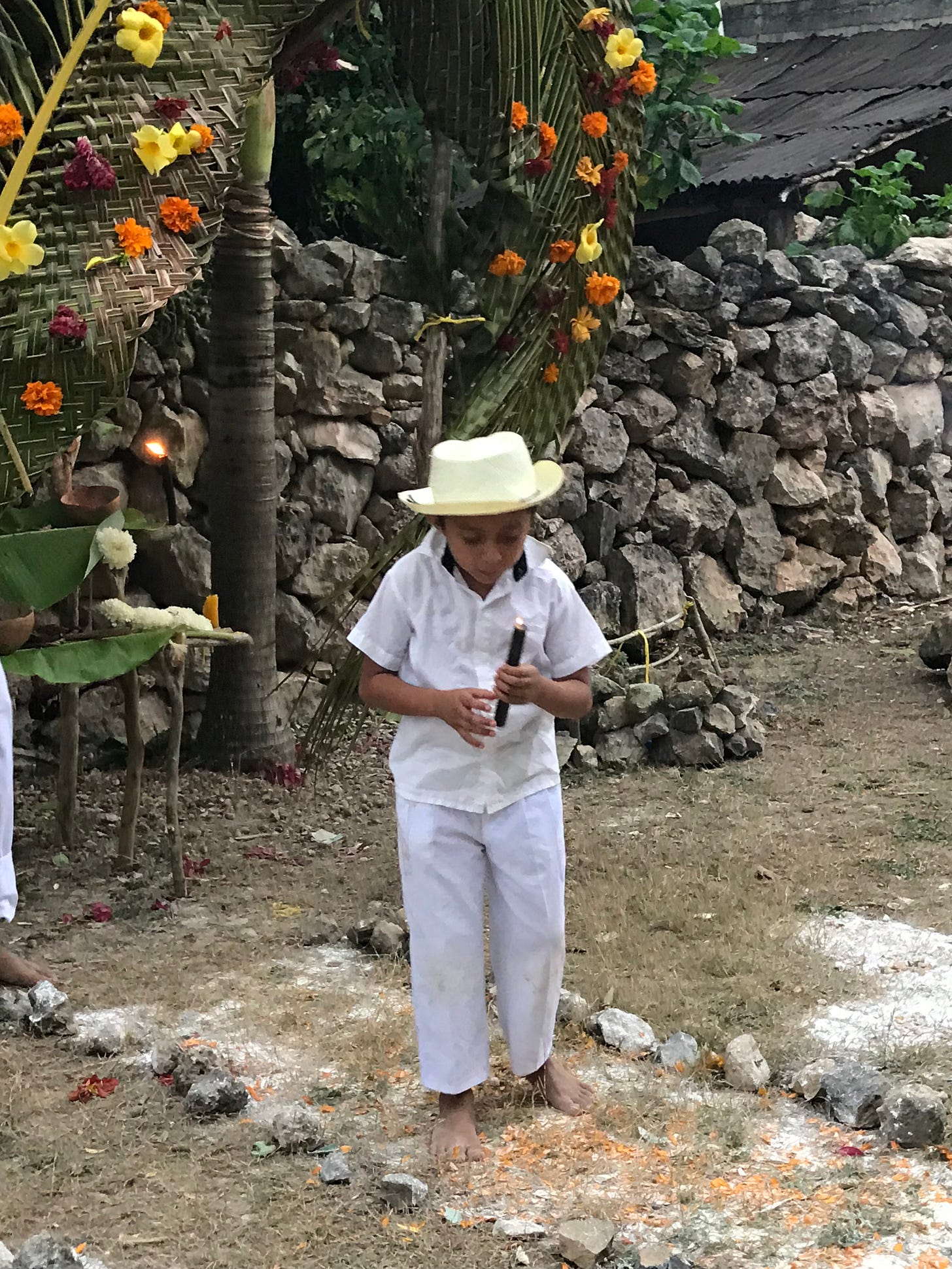It is night, deep in the jungle of Quintana Roo, Mexico. The yellow candle in my hands is melting fast, wax dripping down my fingers and onto the damp soil between my feet. I’m one of nearly a hundred people gathered in this cenote, a sinkhole that yawns deep into the earth. We’re in a tiny Maya village called Tres Reyes that sits a mere 65 miles west of Cancún. Together, our flickering candles illuminate the still water in front of us as the local shaman ignites copal, a fragrant sap from the sacred Ceiba tree. Its sweet white smoke billows through the damp air with mystery and importance.
It is November 2, a date when many cultures believe that the veil between the living and the dead is at its thinnest. It’s All Souls Day for Roman Catholics. It’s the third night of the El Día de los Muertos (The Day of the Dead), an Aztec celebration that was once observed in central and southern Mexico, but has recently boomed into a global pop-culture phenomenon (due, in no small part, to the Disney movie “Coco”).
But we’re here for Hanal Pixán (“ha-nal, pee-shan”), a millennia-old Maya celebration of life and death that literally means “food for the souls.” As the shaman begins his prayer in the ancient but enduring Mayan language, he beckons the dead back to this realm, to this very cenote.
We’ll have dinner in a bit.
[Read the rest of this new story on Wayer: The Fernwayer Journal]





